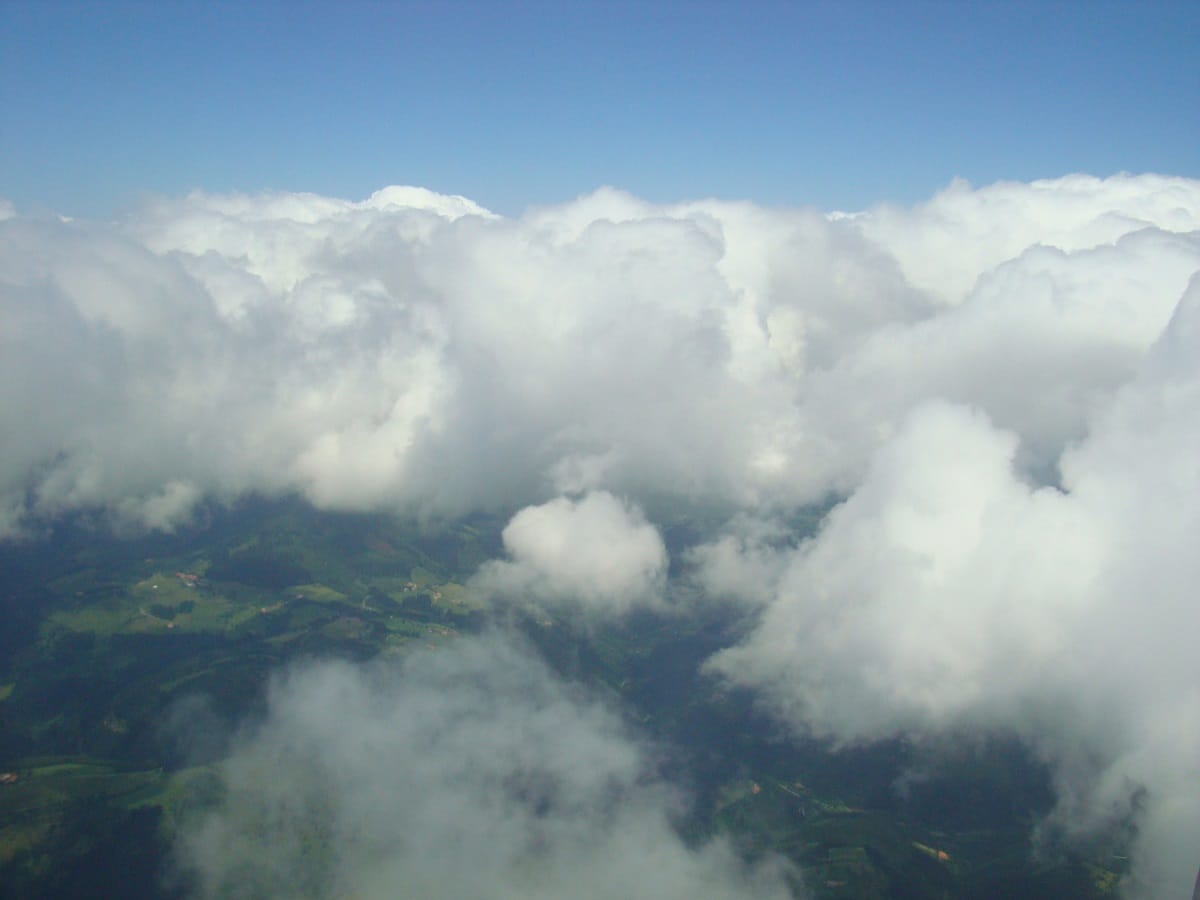
If we are not completely familiar with the technical language used in meteorology, especially the technical language used specifically for aeronautics, we can easily confuse cloud tops with the cloud ceiling. That is, parts of them are located at higher altitudes. However, the aforementioned ceiling refers to the exact opposite: the bottom of the clouds as seen from the Earth's surface. Knowing how high the ceilings and clouds are at any given time is especially interesting for a number of reasons.
For this reason, we are going to dedicate this article to telling you everything you need to know about the cloud ceiling, what its characteristics and usefulness are.
How a cloud forms

Before we begin to describe cloud ceilings, we need to explain how they form. If there are clouds in the sky, there must be air cooling. The "cycle" begins with the sun. As the sun's rays heat the Earth's surface, they also heat the surrounding air. Warm air becomes less dense, so it tends to rise and be replaced by cooler, denser air.. As altitude increases, environmental thermal gradients cause temperatures to decrease. Therefore, the air cools.
When it reaches the cooler layer of air, it condenses into water vapor. This water vapor is invisible to the naked eye because it is made up of water droplets and ice particles. The particles are of such a small size that they can be held in the air by a slight vertical air flow.
The difference between the formation of different types of clouds is due to the condensation temperatures. Some clouds form at higher temperatures and others at lower temperatures. The lower the temperature of the formation, the "thicker" the cloud will be.. There are also some types of clouds that produce precipitation and others that do not. If the temperature is too low, the cloud that forms will consist of ice crystals.
Another factor that affects cloud formation is air movement. Clouds, which are created when the air is still, tend to appear in layers or formations. On the other hand, those with strong vertical currents formed between the wind or the air present a great vertical development. In general, the latter is the cause of rains and storms.
cloud thickness

The thickness of a cloud, which we can define as the difference between the heights of its top and bottom, can be highly variable, except that its vertical distribution also varies considerably.
We can see from a gloomy layer of leaden gray nimbus, that reaches a thickness of 5.000 meters and occupies most of the middle and lower troposphere, to a thin layer of cirrus clouds, no more than 500 meters wide, located at the upper level, they cross a spectacular cumulonimbus cloud (thundercloud), about 10.000 meters thick, which extends vertically to almost the entire atmosphere lower.
Cloud ceiling at the airport

Information on observed and forecast weather conditions at airports is essential to ensure safe takeoffs and landings. Pilots have access to coded reports called METAR (observed conditions) and TAF [or TAFOR] (expected conditions). The first is updated every hour or half an hour (depending on the airport or air base), while the the second is updated every six times (4 times a day). Both consist of different alphanumeric blocks, some of which report cloud cover (the part of the sky covered by an eighth or eighth) and cloud tops.
In airport weather reports, past cloudiness is coded as FEW, SCT, BKN, or OVC. It appears in FEW reports when clouds are sparse and occupy only 1-2 oktas, corresponding to a mostly clear sky. If we have 3 or 4 oktas, we will have SCT (scatter), that is, a scattered cloud. The next level is BKN (broken), which we identify as a cloudy sky with cloudiness between 5 and 7 oktas, and finally a cloudy day, coded as OVC (cloudy), with cloudiness of 8 oktas.
The top of the cloud, by definition, is the height of the lowest cloud base below 20.000 feet (about 6.000 meters) and that cover more than half of the sky (> 4 oktas). If the last requirement (BKN or OVC) is met, data related to the airport's cloud base will be provided in the report.
The contents of the METAR (observation data) are provided by instruments called nephobasimeters (ceilometers in English, derived from the term ceiling), also known as nephobasimeters, or "cloudpiercers" in its most colloquial terms. The most common is based on laser technology. By emitting pulses of monochromatic light upwards and receiving reflected rays from clouds closer to the ground, it can accurately estimate the height of cloud tops.
top of the storm
During the cruise phase, when the aircraft is flying in the upper troposphere, pilots must pay special attention to storms en route, since the great vertical development that some cumulonimbus clouds reach forces them to avoid them and avoid approaching them. Note that in these situations, flying over storm clouds becomes dangerous behavior that must be avoided for flight safety. Radar information carried by the aircraft provides the location of the storm core relative to the aircraft, allowing the pilot to change course if necessary.
To get a rough idea of the height of the tops of these giant cumulonimbus clouds, ground-based weather radars capable of producing different types of images are used. The products provided by the AEMET network include reflectance, accumulated precipitation (estimated rainfall in the last 6 hours) and ecotops (echotops, originally written in English).
The latter represents the maximum relative altitude (in kilometers) of the radar return or return signal, based on a reflectivity threshold used as a reference, normally fixed at 12 dBZ (decibel Z), since there is no precipitation below it. It is important to make clear that we cannot exactly identify the upper part of the ecoregion with the storm, except at the first approximation, but at the highest altitude where hail is likely.
I hope that with this information you can learn more about the cloud ceiling and its characteristics.